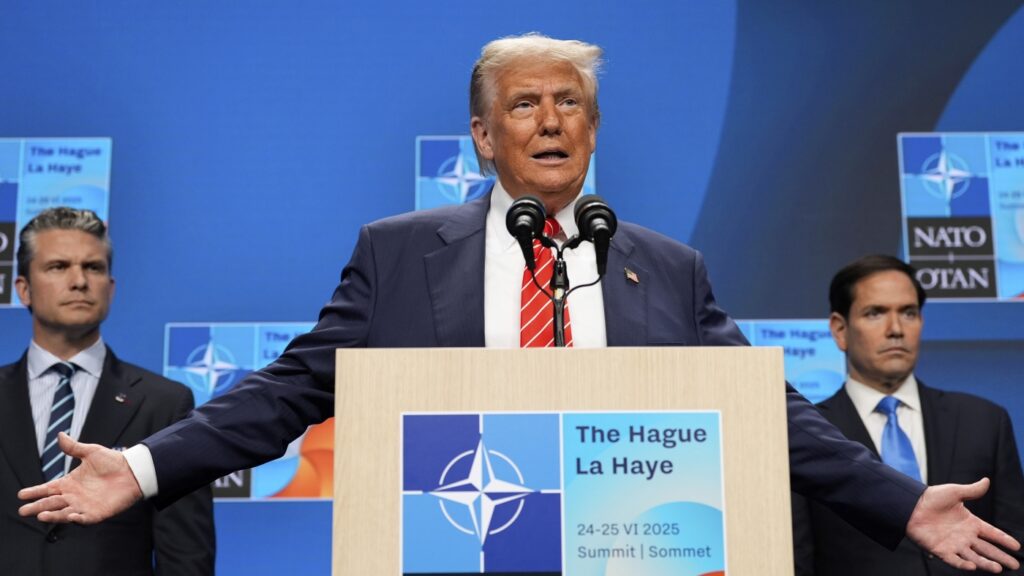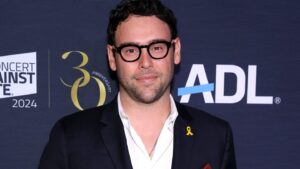
President Donald Trump speaks during a media conference at the end of the NATO summit as Foreign Secretary Marco Rubio, right, and Defence Secretary Pete Hegseth listen, in The Hague, Netherlands, Wednesday, June 25, 2025. (AP Photo/Alex Brandon)
THE HAGUE, Netherlands — NATO’s summit in the Netherlands on Wednesday has been described as “transformational” and “historic.” “We’re witnessing the birth of a new NATO,” Finland’s President Alexander Stubb declared, highlighting the pivotal changes underway.
Immediate Impact
The 32 members of the world’s largest security alliance endorsed a strategic plan to significantly increase defense spending, reminiscent of the Cold War era. This initiative, largely driven by U.S. President Donald Trump, responds to growing security concerns posed by Russia.
Key Details Emerge
The nonbinding agreement calls for a substantial budget increase for NATO’s European members and Canada, amounting to tens of billions of dollars. Previously, the defense spending target was set at 2% of GDP; the new goal is 3.5% by 2035.
3.5% GDP is the new defense spending target for NATO members by 2035.
Additionally, members can now include the cost of weapons and ammunition supplied to Ukraine in their defense budgets, easing the path to reaching the new target. However, this remains a challenge for countries like Canada and several European nations facing economic difficulties.
By the Numbers
The revamped spending plan also requires allies to allocate 1.5% of GDP to upgrading infrastructure essential for military deployment, including roads, bridges, ports, and airfields. Investments in network protection and societal preparedness for future conflicts can also be counted.
Progress will be reviewed in 2029, post the next U.S. presidential election.
Industry Response
Despite the ambitious goals, not all NATO members are on board. Spain has officially refused the agreement, while Slovakia has expressed reservations. Belgium, France, and Italy are expected to struggle to meet the new targets.
A Trump Commitment to Collective Defense
Leaders reaffirmed their “ironclad commitment” to NATO’s collective defense clause, Article 5. In recent years, Trump had cast doubt on U.S. support for allies under attack, linking it to increased defense spending. With the new pledge secured, Trump emphasized, “I left there saying that these people really love their countries. It’s not a ripoff. And we’re here to help them protect their country.”
Trump: “They want to protect their country, and they need the United States.”
A Sidelined Ukraine
This summit marked a shift from previous meetings that focused heavily on Ukraine following Russia’s invasion. While Ukraine’s membership prospects were not discussed, leaders reiterated their commitment to support Kyiv.
Ukrainian President Volodymyr Zelenskyy participated in discussions and met with several leaders, including Trump. The summit’s primary focus remained on defense spending, with a NATO-Ukraine Council meeting occurring on the sidelines.
Russia identified as a “profound security threat” to NATO.
What Comes Next
The summit underscored the United States’ pivotal role in NATO. A concise meeting and statement were crafted to maintain U.S. engagement, with NATO Secretary-General Mark Rutte praising Trump’s leadership.
After the summit, Trump expressed newfound appreciation for NATO, stating that the leaders’ commitment to the alliance and their countries was evident. He described NATO leaders as a “nice group of people” who expressed gratitude for U.S. support.
The summit’s outcomes suggest a significant shift in NATO’s approach to defense and security, setting the stage for future developments in the alliance’s strategic priorities.







